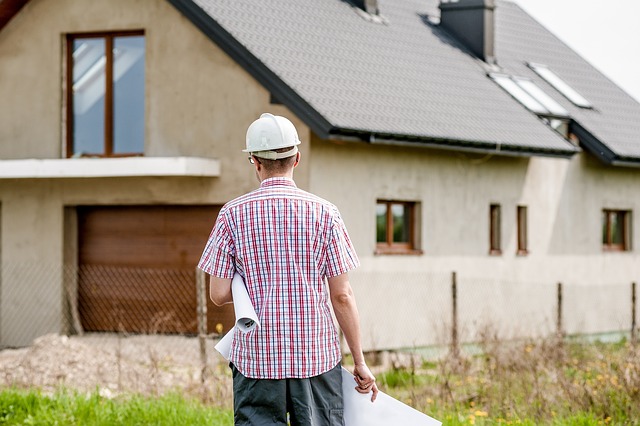Regularly evaluating windows is an essential part of home repair and maintenance, crucial for identifying issues like wear, condensation, drafts, or operational problems that may necessitate replacement. Upgrading to modern energy-efficient windows can offer significant improvements in comfort, noise reduction, and security while also conserving home energy, potentially reducing heating and cooling expenses. When replacing windows, consider factors such as local climate, window type (single-hung, double-hung, casement, awning, sliding, or picture), material durability, ease of maintenance, and aesthetic harmony with your home's style. Prioritize high R-values, low U-values, and features like argon gas fills for optimal heat retention. Engage with professional contractors to ensure precise installation, addressing structural issues and proper ventilation. Optimal performance is achieved through precision installation, utilizing specialized tools, and incorporating Low-E coatings, multiple glazing layers, and effective sealing. Routine post-installation maintenance is key to maintaining peak window functionality and contributing positively to overall home repair and maintenance efforts for lasting benefits. This strategic approach ensures a comfortable living environment while enhancing the home's energy efficiency and structural integrity.
Considering window replacement as part of home repair and maintenance can significantly enhance energy efficiency, aesthetic appeal, and overall comfort. This article delves into the critical aspects of determining when it’s time to replace your windows, guiding you through the process of selecting the optimal windows for your abode, and ensuring a seamless installation experience. With expert tips and best practices at the forefront, homeowners will gain valuable insights to navigate window replacements with confidence, contributing to the longevity and performance of their homes.
- Evaluating the Need for Window Replacement in Home Repair and Maintenance
- Step-by-Step Guide to Selecting the Right Windows for Your Home
- Executing a Smooth Window Installation: Best Practices and Expert Tips
Evaluating the Need for Window Replacement in Home Repair and Maintenance

When considering home repair and maintenance, evaluating the need for window replacement is a critical decision that can significantly impact energy efficiency, comfort, and the overall aesthetic of your living space. Homeowners should assess their windows regularly for signs of wear, condensation between panes, drafts, or difficulty in operation, as these can be indicators of reduced performance and potential failure. Modern window designs offer enhanced insulation properties, noise reduction, and improved security features, making them a worthwhile investment for any homeowner looking to upgrade their property’s functionality and value.
Factors such as the age of existing windows, the frequency of repairs, and changes in local climate patterns can influence the decision to replace windows. It is advisable to consider the long-term benefits and costs associated with window maintenance and potential replacements. High-quality window installations not only contribute to a more comfortable living environment but also play a pivotal role in home energy conservation, potentially leading to significant savings on heating and cooling bills. Incorporating low-emissivity (low-E) coatings, double or triple glazing, and proper sealing can further enhance the efficiency of new window units, making them a smart choice for those prioritizing home repair and maintenance with a focus on sustainability and cost savings.
Step-by-Step Guide to Selecting the Right Windows for Your Home

When considering home repair and maintenance, window replacement stands out as a significant decision that can enhance energy efficiency, aesthetic appeal, and overall comfort within your home. Selecting the right windows involves careful consideration of various factors to ensure they meet both your functional needs and budgetary constraints. Begin by assessing the existing window frames for signs of wear or drafts, which may indicate the need for replacement. Research different types of windows—single-hung, double-hung, casement, awning, sliding, and picture windows—to understand their features and benefits. Energy efficiency is paramount; look for windows with high R-values, low U-values, and argon gas fills to reduce heat transfer and improve insulation. Consider the window materials as well; vinyl, wood, fiberglass, and aluminum each offer different advantages in terms of durability, maintenance, and design flexibility.
Next, evaluate the style and architecture of your home to choose windows that complement its design. Consult with a professional to determine the best fit for your home’s specific openings. They can guide you through the process, explaining the nuances of window installation, including flashing, sealing, and trim work required for proper integration into your home’s structure. Remember to consider the orientation and exposure of each window location to maximize natural light and ventilation while minimizing solar heat gain. Finally, obtain multiple quotes from reputable window contractors to compare costs and warranties, ensuring that the windows you select will not only beautify your home but also stand the test of time with minimal maintenance required. By taking a systematic approach to selecting the right windows, you’ll contribute positively to the longevity and comfort of your living space.
Executing a Smooth Window Installation: Best Practices and Expert Tips

When embarking on window replacement as part of home repair and maintenance, a smooth installation is paramount to ensure energy efficiency, durability, and long-term performance. Homeowners should consider several best practices to facilitate this process. Firstly, selecting the appropriate window type and size for each opening is crucial for optimal function and aesthetic appeal. It’s advisable to work with reputable suppliers and contractors who can provide expert guidance throughout the selection and installation phases. Preparation is key; this includes removing old windows, repairing any structural damage, and ensuring proper ventilation and insulation within the frame.
During installation, precision alignment and sealing are essential to prevent moisture intrusion and maintain thermal efficiency. Professional installers often utilize specialized tools to achieve exact measurements and fit. Additionally, choosing windows with low-emissivity (Low-E) coatings, argon gas fills, and weather stripping can enhance performance and reduce heating and cooling costs over time. Regular maintenance post-installation, such as cleaning tracks, inspecting seals, and lubricating moving parts, will extend the lifespan of your new windows and keep them functioning at their best. By adhering to these expert tips and best practices, homeowners can guarantee a seamless window replacement experience that contributes significantly to home repair and maintenance.
When considering home repair and maintenance, windows play a pivotal role in energy efficiency, comfort, and aesthetics. This article has outlined the critical steps for evaluating whether window replacement is necessary, selecting the ideal windows for your abode, and ensuring a seamless installation process. By understanding the factors that influence window performance and employing expert tips for installation, homeowners can significantly enhance their living environment. The right choice of windows not only improves insulation and reduces energy costs but also elevates the curb appeal of your property. Thus, treating your home to new, efficient windows is a sound investment in its long-term maintenance and value.
